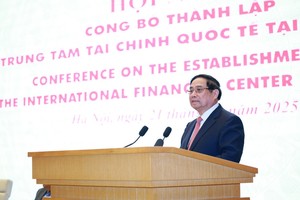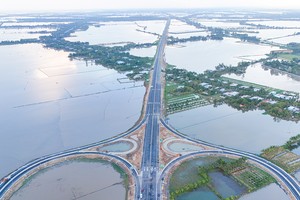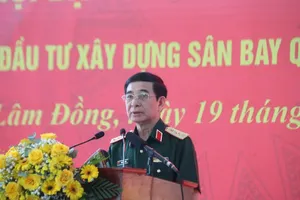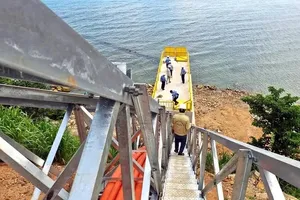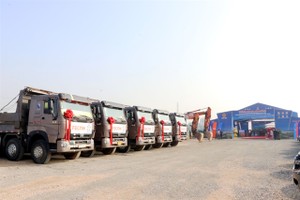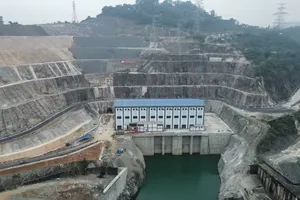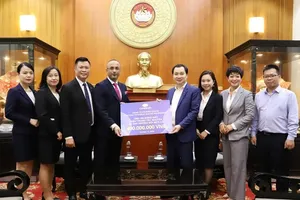Soon Dong locates in the heart of the Phong Nha Ke Bang National Park in Quang Binh province of Central Vietnam.
A team of five divers, including three members of the rescue team who joined a search for local youth football team the Wild Boar trapped in Thailand's Tham Luang Cave last year, led by Martin Holroyd, a cave expert of the British Royal Caving Research Association, kicked off the research diving trip in the beginning of April.
According to Jason Mallinson, a cave expert of the British Royal Caving Research Association, this research aims to look for a 600m river passage connecting Son Doong Cave and Thung Cave. Experts believed when reaching a depth of 25m, the underground river section inside Son Doong Cave runs in connection with the underground river inside Thung Cave.
However, the team recognized the depth of the underground river section inside Son Doong Cave is 93m by using ropes to measure the bottom.This depth may not allow them to get to a 'safe place' for further diving with a regular diving cylinder. Divers looked for ceiling spots at the depth of 40-50 meters, using their current scuba tanks together with the rebreather system for a longer dive time.
Diving experts went past a deep stop of 77 meters but they were unable to find the passage to Thung Cave and it went deeper underground. The team found a new tunnel system at a depth of 60 meters below present sea level. The exploration has clearly proved that Son Doong Cave is bigger than its current title of the world’s largest cave, making it more mysterious.
The research trip is funded by the Oxalis Adventure Tour Operator with a cost of US$53,000. According to Nguyen Chau A, CEO of Oxalis Company Limited, the company will finance another study in next year.
The Oxalis Adventure Tour Operator has been permitted to operate one-day tour and two day- one night tour in the cave from November to next August since 2015. The five day and four night tour costs US$3,000 a person. Each tour has a maximum of 10 visitors, totaling a maximum of 500 tourists for the entire year.
According to regulations of the People’s Committee of Quang Binh province and British experts, Son Doong will not receive adventurers in the last months of the year for its environment protection and biodiversity conservation as well as giving porters and guides a chance to have a break.
According to regulations of the People’s Committee of Quang Binh province and British experts, Son Doong will not receive adventurers in the last months of the year for its environment protection and biodiversity conservation as well as giving porters and guides a chance to have a break.
Speaking at the meeting, Quang Binh Vice Chairman Tran Tien Dung said that the provincial authorities expect Quang Binh to become the top tourist attraction in Vietnam and the South-East Asian region in the coming time.
Phong Nha-Ke Bang National Park in the central province of Quang Binh is one of the most spectacular wilderness sites in South East Asia and one of the 2 largest limestone regions in the world. It was recognized as a World Heritage site for the second time for its ecological system and biodiversity at the 39th session of the World Heritage Committee in Bonn, Germany in 2015. The first time was in 2003 for its geological and geomorphologic values. It is home of more than magnificent 300 caves and ranks among the most popular tourist destinations in Vietnam, including the world's largest cave, Son Doong; the world's 3rd largest cave, En cave; and the longest dry cave in Asia, Thien Duong (Paradise) Cave.

